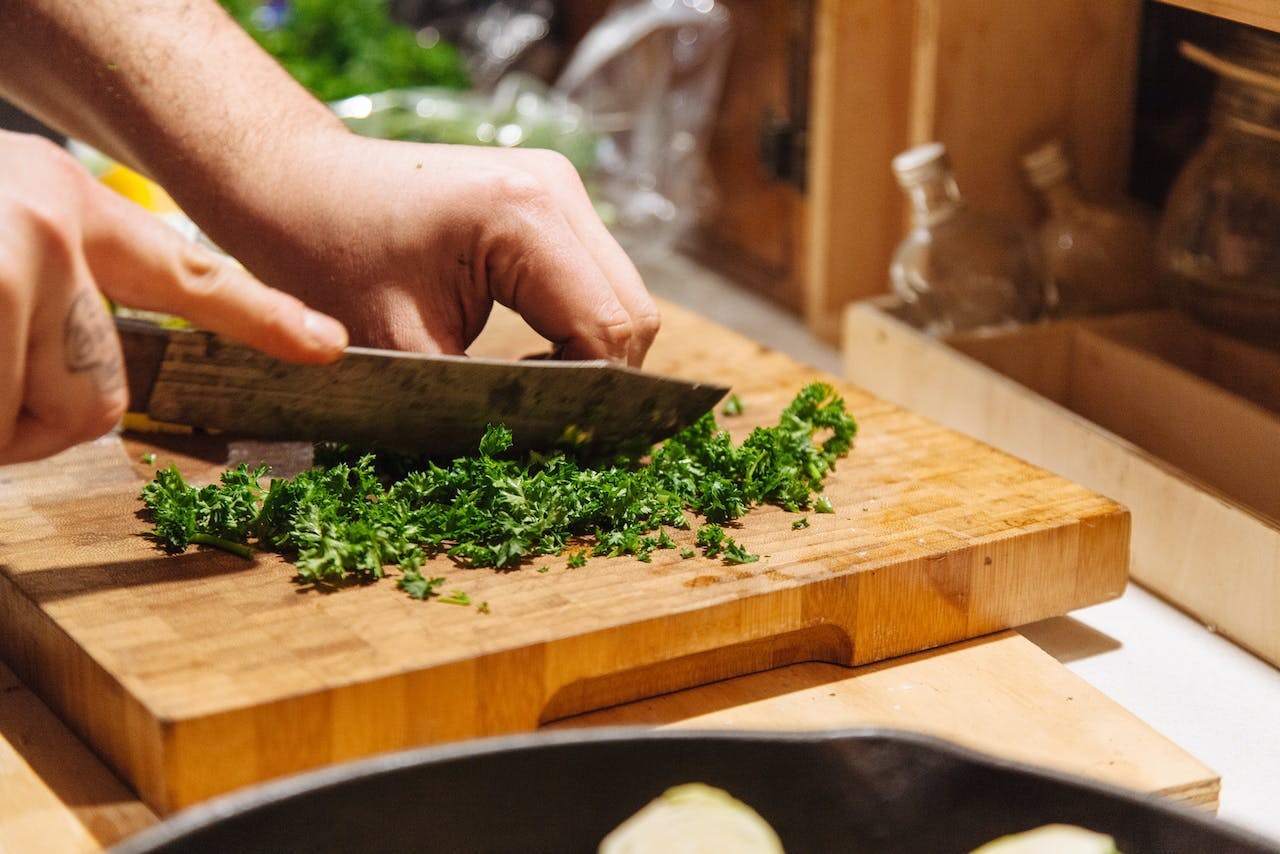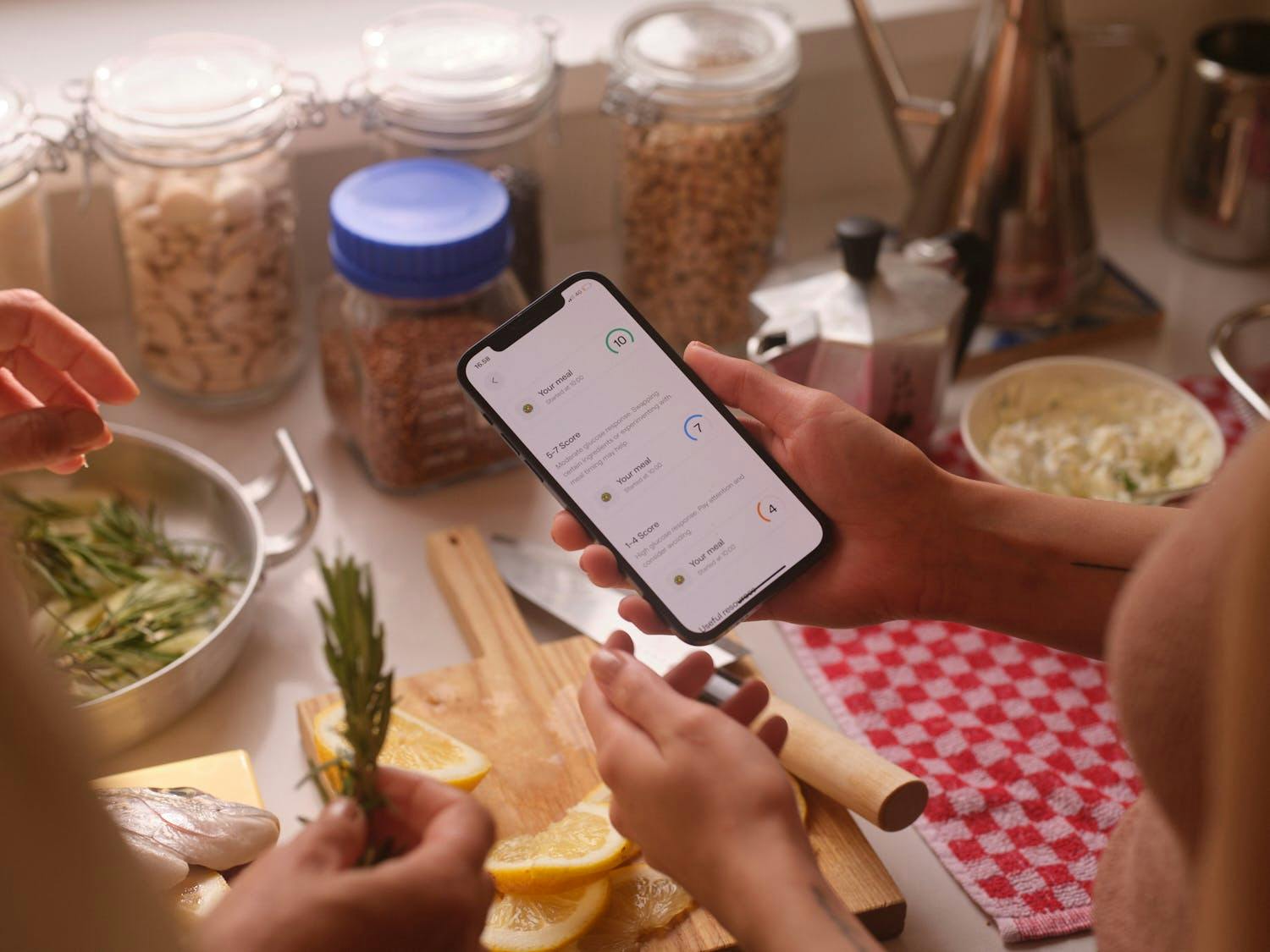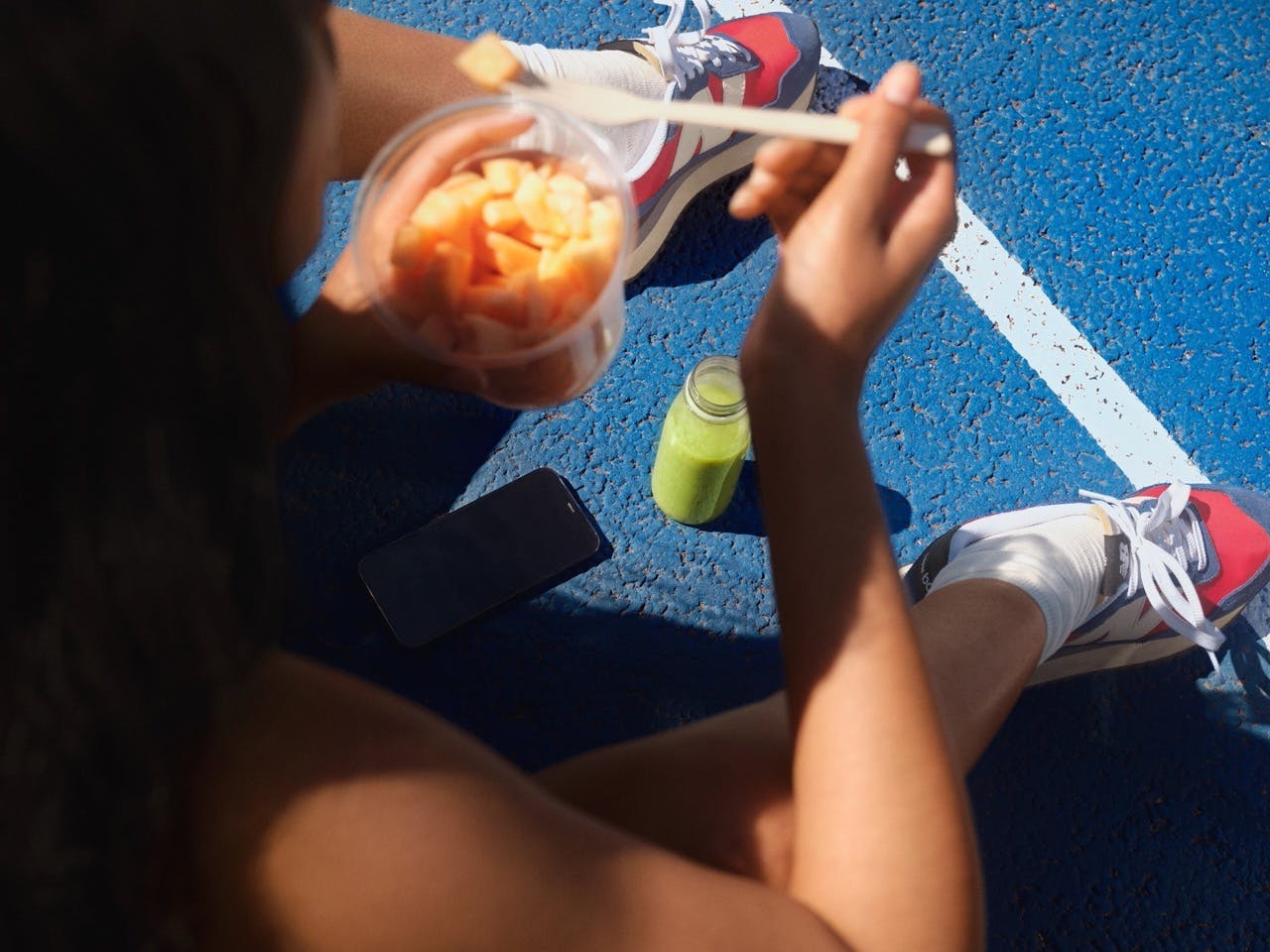There’s no one-size-fits-all approach to weight loss and it’s even harder when you have insulin resistance — a state that occurs when your cells stop responding properly to insulin, a hormone that regulates blood glucose levels.
With insulin resistance, insulin fails to do its job correctly leading to chronically elevated levels of glucose in the bloodstream and chronically elevated levels of insulin to try to mitigate the high blood glucose. The body stores excess glucose in the form of fat in both the liver and adipose tissue, leading the liver to become increasingly less sensitive to insulin and perpetuating a vicious cycle of fat storage.
Thankfully reversing insulin resistance is possible — and eating the right kinds of macronutrients and micronutrients that balance your blood sugar can help. Read on to learn the key components of a metabolically healthy diet, followed by 7 days of meals to help you balance your blood glucose levels, improve your insulin sensitivity, and manage your weight.
The best foods to eat when you have insulin resistance
While eating for insulin resistance and weight loss can look similar to eating for general health, the former includes a few specifics that may change both what and how you eat.
If you have insulin resistance and are struggling to lose weight, you should focus on reversing insulin resistance by:
- Increasing your intake of antioxidant-rich, anti-inflammatory vegetables; lean proteins; healthy fats; and fiber from fruits, vegetables, and complex carbohydrates.
- Make efforts to reduce your intake of ultra-processed foods and refined sugars that spike blood sugar.
Our advice? Focus on what you can add to meals to make them more aligned with the strategies outlined below and remember, moderation really is key.
4 key steps to making insulin resistance-friendly meals
If you have insulin resistance and are struggling with weight loss, follow these 4 key steps to make every meal or snack metabolically friendly.
1. Color your plate with fruits and vegetables
Eating at least five servings of fruits and vegetables a day encourages the benefits of phytonutrients, powerful plant compounds that have anti-inflammatory and antioxidant properties, and adds volume to meals without adding a significant amount of calories, making weight loss easier [1].
2. Prioritize lean proteins
Protein is the most satiating macronutrient, meaning it keeps us fuller and more satisfied than carbohydrates and fat. Protein also helps stabilize blood sugar by blunting the absorption of carbohydrates and it supports the maintenance of lean body mass which supports metabolism and healthy body composition.
3. Choose healthy fats
Dietary fat helps to slow the absorption of glucose in the intestines — blunting blood sugar spikes and keeping us fuller for longer — and are essential for the absorption of fat-soluble vitamins A, D, E, and K. Adding healthy fats like olive oil, avocados, and nuts/seeds makes meals more enjoyable, prevents cravings, and may reduce snacking.
4. Fill up on fiber
Fiber is a type of carbohydrate found in fruits, vegetables, and other plant foods that goes undigested in the gastrointestinal tract and impacts a number of metabolic factors. Research shows that soluble fiber — which turns into a gel-like substance during digestion — may help blunt blood sugar spikes and can lower blood cholesterol levels by reducing the absorption of cholesterol in the blood [2, 3].
If you’re just getting started on your metabolic health journey and want to dive deeper into all things nutrition, check out our Ultimate Guide to Nutrition for Metabolic Health. Otherwise, feel free to get started with our 7-day plan that offers glucose-friendly breakfast, lunch, and dinner ideas to inspire your next meal.
7-day insulin resistance meal plan for weight loss
Day 1
Breakfast:
- Overnight oats with chia seeds, cinnamon, Greek yogurt, and blueberries. Combine ¼ cup rolled oats, ⅓ cup milk, ¼ cup Greek yogurt, 2 tsp. chia seeds, 2 tsp. honey, and ¼ tsp. cinnamon for potential added blood sugar benefits and store in the fridge overnight [4]. Top with ¼ cup blueberries before serving.
Lunch:
- High-fiber kitchen sink bowls with ~2 cups of non-starchy vegetables that you have on hand, ~½ cup lentils for fiber, and ~4-6 oz. grilled shrimp for protein. Top with a drizzle of high-quality olive oil, lemon, and a pinch of sea salt for extra satisfaction.
Dinner:
- Taco stuffed sweet potatoes with ~4-6 oz. lean ground beef, garlic, onions, pico de gallo, and a few slices of avocado stuffed in a medium baked sweet potato for fiber-rich complex carbohydrates. Consume a side of greens (~2 cups) first to blunt blood sugar spikes [5].
Day 2
Breakfast:
- Homemade smoothie with ~1-2 cups frozen greens and frozen berries, ~1-2 tbsp. nut butter, ~1 tbsp. flaxseed for omega-3 fatty acids, almond milk, and protein powder with a minimum of 20 grams of protein.
Lunch:
- Easy sheet pan meal with ~1-2 cups cruciferous vegetables like broccoli, cauliflower, or Brussels sprouts, ~½ to 1 cup delicata squash for complex carbohydrates, and 4-6 oz. chicken thighs. Add to a sheet pan, drizzle all ingredients with olive oil and your favorite spices. Roast at 400 Fahrenheit for 20-30 minutes until done.
Dinner:
- 4-6 oz of sheet pan-roasted salmon with ~1-2 cups of roasted green beans and zucchini and ~½ cup cooked jasmine rice. Improve your blood sugar response by cooking and cooling your rice prior to eating to create a resistant starch.
Day 3
Breakfast:
- Egg frittata with 2-3 eggs, 1 handful each of bitter greens like baby kale or arugula, and cherry tomatoes. Serve with a side of whole grain or sprouted toast for extra fiber, and low-GI carbohydrates.
Lunch:
- Deconstructed burger bowls: ¼ to ⅓ lb. ground beef (~90-93% lean) over lettuce, onion, tomatoes, pickles, Dijon mustard, and a side of homemade roasted potato wedges.
Dinner:
- Zesty shrimp bowls with 4-6 oz. of sauteed shrimp, ~1-2 cups of sauteed vegetables, ~½ cup cilantro lime rice. Add everything to a bowl and top with a few slices of avocado for healthy fats to stay fuller for longer.
Day 4
Breakfast:
- Breakfast plate with 2-3 eggs for high-quality protein, ~1-2 handfuls of arugula with lemon, 1 small handful of berries, and sprouted sourdough or whole grain toast for better blood sugar response [6].
Lunch:
- Mediterranean bowls with 4-6 oz. grilled chicken, ~1-2 cups raw or roasted vegetables (like lettuce, tomatoes, cucumbers, green beans, cabbage), kalamata olives, ~½ cup cooked quinoa, and ~1-2 tbsp. tahini dressing. Add a splash of apple cider vinegar for extra tang and potential blood sugar benefits [7].
Dinner:
- 4-6 oz. lean protein (shrimp, grilled chicken, lentils), ~1-2 cups cooked veggies (like peppers, onions, zucchini, green beans, and/or wilted greens) over ~1 cup cooked pasta. Opt for whole-grain pasta for extra fiber, which helps to blunt blood sugar response.
Day 5
Breakfast:
- Greek yogurt bowl with ~¾ cup plain Greek yogurt, a small handful of chopped walnuts, ½ cup blueberries, and a drizzle of honey or maple syrup. Opt for plain Greek yogurt to reduce added sugars that may cause blood sugar spikes.
Lunch:
- Adult snack plate lunch with 2-3 hard-boiled eggs and/or canned tuna; ~1 cup of vegetables like edamame, bell peppers, and cucumbers; small handful of berries or chopped apple; and high-fiber nut/seed crackers (like Mary’s Gone Crackers) that are rich in complex carbohydrates and omega-3 fatty acids.
Dinner:
- Homemade turkey sliders with ~¼ to ⅓ lb. lean ground turkey, served with ~1-2 cups roasted broccoli and Brussels sprouts, and ~½ cup roasted sweet potato wedges. Cruciferous vegetables like broccoli and Brussels sprouts have been associated with a reduced risk of Type 2 diabetes [8].
Day 6
Breakfast:
- Breakfast salad with ~1-2 cups baby spinach or fresh arugula, chopped cucumber cherry tomatoes, ~¼ to ½ cup cooked beluga lentils, 2-3 soft-boiled eggs, and a few slices of avocado. Sprinkle with sunflower seeds, which may help to reduce blood glucose [9].
Lunch:
- Open-faced sandwich with 1 can skipjack tuna for ~30 grams of protein, lemon, capers, and ¼ to ½ an avocado on sprouted spelt or whole grain toast. Serve with a side of chopped raw vegetables (like bell peppers, cucumbers, tomatoes, and snap peas) for extra fiber and volume to keep you feeling full until dinner.
Dinner:
- Spaghetti squash bolognese made with ~1-2 cups of cooked spaghetti squash topped with ~4-6 oz. lean ground beef with low-sugar tomato sauce. Serve a side of roasted vegetables like baby broccoli which is high in sulforaphane, a compound that may improve glucose control in individuals with Type 2 diabetes [10].
Day 7
Breakfast:
- Savory cottage cheese bowl with ~¾ cup cottage cheese, sliced cucumbers, sliced avocado, cherry tomatoes, chives, and “everything but the bagel” seasoning blend. Top with chives for extra flavonoids which have been associated with improved blood sugar control in a small study of individuals with pre-diabetes [11].
Lunch:
- Quick salad using pre-chopped vegetables (slaw mix, salad kit, baby greens, etc.), ~⅓ cup chickpeas, and 4-6 oz protein (grilled chicken, salmon, beef, tempeh, etc.). Top with ~1-2 Tbsp. a quick homemade vinaigrette with olive oil, lemon, Dijon mustard, salt, and herbs.
Dinner:
- Glucose-friendly zucchini lasagna with a simple side salad for extra fiber.
Shopping list for the 7-day insulin resistance diet
- ¼ cup rolled oats
- 1-2 cups milk of choice
- 1 cup Greek yogurt
- ~2-3 bags of salad greens (spring mix, baby romaine, arugula, baby kale, etc.)
- ~7-12 cups cooked non-starchy vegetables of your choices (bell peppers, mushrooms, broccoli, asparagus, cauliflower, Brussels sprouts, haricot verts, cherry tomatoes, etc.)
- ~1-2 cups roasted green beans and zucchini
- 1-2 delicata squash
- ~1 cup jasmine rice
- 3-5 medium potatoes (russet, sweet potatoes, yams, etc.)
- 6-9 eggs
- 1 cup lentils
- ~8-12 oz shrimp
- ~1-2 lbs. lean ground beef
- ~8-12 oz chicken thighs
- ~8-12 oz salmon
- ¼-⅓ lb ground turkey
- ½ cup cooked quinoa
- 1 cup whole grain pasta
- 1 cup berries
- Nuts/seeds
- 2 cans skipjack tuna
- Apple cider vinegar
- 3-4 pieces sprouted or whole grain toast
- 2-3 avocados
- ~1 cup frozen greens (kale, spinach, etc.)
- 1 small zucchini
- 1 jar no sugar-added tomato sauce
- ~1 cup frozen berries
- ~1-2 Tbsp. nut butter
- ~1 Tbsp. flaxseed meal
- 1 small spaghetti squash
- 1 carrot
- 1 red onion
- 2-3 stalks celery
- ¾ cups cottage cheese
- ¼ cup chickpeas
- Olive oil
- Apple cider vinegar
- Sea salt
More recipe ideas for insulin resistance
- 4 Easy Weeknight Recipes If You Have Insulin Resistance
- 3 Mediterranean Diet Breakfast Ideas for Weight Loss
- Harvest Casserole Recipe
- Pesto Salmon Recipe
- Beef Enchiladas Recipe
- 3 Easy Vegan Recipes for Weight Loss
Find what works best for you
Being sure to build balanced meals that have plenty of protein; fiber from fruits, vegetables, and complex carbs; and enough healthy fats to keep you satisfied is key for both reversing insulin resistance and supporting long-term weight loss goals.
Combine these nutrition strategies with the other pillars of metabolic health — exercise, sleep, and proper stress management — and you’ll be making strides towards not only increasing your lifespan but your healthspan, too.
Interested in learning exactly how your body responds to food and other factors like stress, sleep, and exercise? Using a continuous glucose monitor can provide insights into your blood sugar that can help you to make more informed decisions that support metabolic health and make weight loss easier.
Key takeaways
- Losing weight is difficult, but insulin resistance can make it even harder. Focusing on improving insulin sensitivity is a more effective approach than calorie counting.
- Focus on eating antioxidant-rich fruits and vegetables, prioritizing sources of lean protein at every meal and snack, choosing high-fiber carbohydrates more often than refined versions, incorporating healthy fats, and limiting ultra-processed foods and refined sugars.
- The best weight loss plan is the one you can stick with for a lifetime. Avoid being overly restrictive or labeling foods as “off limits” as this approach typically leads to feelings of deprivation, can trigger disordered eating and/or eating disorders, and may lead to unintentional weight gain as a result.
Ali McGowan is a Registered Dietitian with her Master’s degree in Nutrition, Interventions, Communication, and Behavior Change from the Friedman School at Tufts University and currently works in the field of obesity. Ali is passionate about the spread of sound nutrition and health information and seeks to explain both the “what” and the “how” behind key concepts to help individuals make empowered and personalized health decisions. When she’s not working, you can find her spending time in nature, cooking, or finding joy in movement. Follow her on Instagram @sproutoutloud.
References:
- https://academic.oup.com/ije/article/46/3/1029/3039477?login=false
- https://pubmed.ncbi.nlm.nih.gov/1663443/
- https://www.ncbi.nlm.nih.gov/pmc/articles/PMC6566984/
- https://www.ncbi.nlm.nih.gov/pmc/articles/PMC3767714/
- https://www.ncbi.nlm.nih.gov/pmc/articles/PMC7551485/
- https://www.ncbi.nlm.nih.gov/pmc/articles/PMC3317179/
- https://www.ncbi.nlm.nih.gov/pmc/articles/PMC8243436/
- https://www.ncbi.nlm.nih.gov/pmc/articles/PMC8718861/
- https://www.ncbi.nlm.nih.gov/pmc/articles/PMC8445494/
- https://pubmed.ncbi.nlm.nih.gov/28615356/
- https://www.ncbi.nlm.nih.gov/pmc/articles/PMC7339438/


